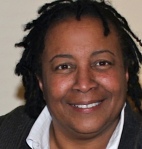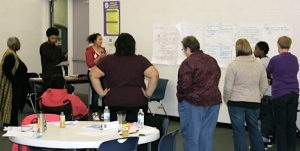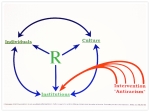For the last year, Crossroads colleagues at ERAC/Ce (Eliminating Racism and Claiming/Celebrating Equality) in Kalamazoo, MI have been intentionally working with folks in the immigrants rights and immigrant integration movements. From this collaboration come these five insights regarding the contribution antiracism offers these movements.
1. The antiracism analysis goes beyond the Black/White binary and aims to build multi-racial coalitions.
Conversations about race and racism in the U.S. are often dichotomous, inclusive only of White dominant and African-American cultural values. An antiracism lens invites those of us who work to welcome immigrants to understand the ways in which all immigrants become racialized when they arrive here according to the U.S. race construct. There are typically six racial groups in the U.S. – Arab, Asian and Pacific Islander, Latino, Native American, African American, and White. Immigrants may or may not understand how they are viewed in the U.S. compared to in their home country, but there are very real ways in which their race affects how they are treated and how much access they get to institutions and the resources necessary for life. An antiracism analysis also reminds many of us that we are not all immigrants, which you often hear within the immigrant rights and integration movement. The founding of the U.S. began with the genocide of Native Indian peoples who originally lived on this land. What’s more, there have been economic and political strategies throughout history that have been designed to steal land and resources from and invisiblize Indian people and Indian country.
2. Antiracism teaches White people, including White immigrant allies and advocates, that racism is not about blame.
None of us were around when racism was established in this country over 500 years ago. Many conversations about race and racism go badly because we aren’t taught how to have productive dialogue about these often-painful topics. We need a common language, more complete awareness of history, and an understanding that racism isn’t any one person’s fault (at least not anyone living today). And yet we are all responsible for the dismantling of it. Racism dehumanizes us all and antiracism helps White people as well as People of Color find their self-interest in the work. This analysis can help White U.S.-born immigrant advocates and allies approach their work from a place of solidarity with immigrants and other People of Color instead of paternalism (wanting to “help, fix, and save” immigrants). It also reminds us that racism is more than just individual race prejudice. We must also examine how U.S. systems and institutions were built for White people, by White people, and in large part continue to serve White society better. Instead of focusing narrowly on a particular person’s attitudes and actions about different racial groups, antiracism asks the question: how is a particular White dominant culture value, practice, policy, or law working to maintain the supremacy of Whiteness?
3. Antiracism work is collaborative and always informed by/centered around anti-oppressive values.
Antiracism move us from the White dominant culture values like scarcity, either/or thinking, individualism/competition, and secrecy toward the antiracist/anti-oppressive values like an abundant worldview, both/and thinking, collective action, and transparency. Further, antiracism seeks to dismantle the silo-ing of and competition among social justice movements (aka the “Oppression Olympics”), which has been established through the divide and conquer strategies of our colonial and neo-colonial history. What if oppressed groups starting working together – sharing knowledge, wisdom, resources, and tools? What if we all knew there is enough to go around and that we truly are stronger together? What if as resisters of oppression we began working cooperatively to co-create a country that welcomes and celebrates all?
4. Antiracism builds upon intersectionality – the understanding that we all have multiple identities.
Antiracism understands that racism is a system of oppression linked to other systems of oppression that robs each of us of our full humanity and impairs our ability to create just and sustainable community with one another both locally and globally. Racism is not the only “ism” and antiracism doesn’t ask us to drop our other identities in order to talk about race and racism. We can use our other experience around privilege and/or oppression as a window, not a wall. While it isn’t helpful to talk exclusively about racism, it is important to talk explicitly about racism. We must ask: how is race compounding upon all other identities (such as national origin and immigration status)?
5. Antiracism sees immigrant rights and immigrant integration (or welcome work) as resistance to oppression and offers a way of changing systems that have historically kept immigrants from being able to successfully integrate into their adopted hometowns.
The focus on creating welcoming receiving communities is approachable by many and can lead into deeper conversations of what it truly means to be welcoming — both in terms of individual and collective attitudes and actions AND how institutions are or aren’t effectively serving immigrants and why. Addressing national origin, culture, language, race, and documentation status-based prejudice is important and antiracism invites us to go deeper and address how immigrants experience systems and institutions (i.e.: hospitals and schools). Doing the work of building welcoming communities is in itself an act of resistance to the historic realities of racism’s systemic and structural oppression.
Attitude or bias changing work is important and can be life-altering for both immigrants and U.S-born residents. And yet antiracism would posit that prejudice-reducing work can sometimes be masked as immigrant integration work. A school or local municipality can pass a “welcoming resolution” or proclamation, claiming to be a welcoming place to immigrants, but not actually become accountable to what that means on real and tangible levels. For example, how does a documented or undocumented farmworker from Guatemala or a Sudanese refugee experience a hospital or school or city hall when they walk through the door? In addition to changing receiving community members’ hearts and minds about immigrants (i.e.: help people see immigrants as contributors rather than “drainers”), we need an antiracism analysis grounded in the historical context of race and racism in the U.S. These two forms of resistance together can create a more inclusive, equitable, and welcoming country.
_______________________________________________________
About the writers:
 Lillie Wolff is one of two Co-Executive Directors of ERAC/Ce (Eliminating Racism and Claiming/Celebrating Equality) and a Core Organizer/Trainer for Crossroads Antiracism Organizing and Training. Prior to working with ERAC/Ce and Crossroads, Lillie spent seven years organizing around farmworker and immigrant rights and inclusion. Lillie is passionate about the intersections of social justice, ecological justice, and art, and has served on the Board of Directors of the Institute for Sustainable Living, Art, and Natural Design (ISLAND) since 2009. She earned a BA in Human Development and Social Relations from Kalamazoo College in 2004. Lillie enjoys dancing, biking, gardening, spending time in nature, and preparing and eating communal meals with her wonderful anti-oppressive community.
Lillie Wolff is one of two Co-Executive Directors of ERAC/Ce (Eliminating Racism and Claiming/Celebrating Equality) and a Core Organizer/Trainer for Crossroads Antiracism Organizing and Training. Prior to working with ERAC/Ce and Crossroads, Lillie spent seven years organizing around farmworker and immigrant rights and inclusion. Lillie is passionate about the intersections of social justice, ecological justice, and art, and has served on the Board of Directors of the Institute for Sustainable Living, Art, and Natural Design (ISLAND) since 2009. She earned a BA in Human Development and Social Relations from Kalamazoo College in 2004. Lillie enjoys dancing, biking, gardening, spending time in nature, and preparing and eating communal meals with her wonderful anti-oppressive community.
 Jo Ann Mundy is one of two co- Executive Directors of ERAC/Ce (Eliminating Racism and Claiming/Celebrating Equality), and a Core Organizer-Trainer for Crossroads Antiracism Organizing and Training, a national partner working collaboratively with ERAC/Ce toward the institutionalization of racial justice in public and private institutions throughout southwest Michigan. Currently Jo Ann serves on the boards of Crossroads and the People’s Food Coop. As a founder mentor of the NIA Project, Jo Ann encourages the celebration of identity, purpose and sisterhood in adolescent women of color. Additionally, Jo Ann is a founding member of the Three Rivers Area Faith Community (TRAFC), an ecumenical faith-based social justice network of churches striving to build a multi-cultural, multi-ethnic, multi-racial, multi-lingual and multi-generational anti-racist faith community in Three Rivers, MI where she completed her doctoral thesis Sacred Actions to Bring Racial Reconciliation. Enjoying over 25 years of pastoral ministry, Jo Ann currently serves as pastor of On Common Ground of Three Rivers Michigan. Jo Ann enjoys reading, music, her guitars and computers and, most of all, the young people in her life.
Jo Ann Mundy is one of two co- Executive Directors of ERAC/Ce (Eliminating Racism and Claiming/Celebrating Equality), and a Core Organizer-Trainer for Crossroads Antiracism Organizing and Training, a national partner working collaboratively with ERAC/Ce toward the institutionalization of racial justice in public and private institutions throughout southwest Michigan. Currently Jo Ann serves on the boards of Crossroads and the People’s Food Coop. As a founder mentor of the NIA Project, Jo Ann encourages the celebration of identity, purpose and sisterhood in adolescent women of color. Additionally, Jo Ann is a founding member of the Three Rivers Area Faith Community (TRAFC), an ecumenical faith-based social justice network of churches striving to build a multi-cultural, multi-ethnic, multi-racial, multi-lingual and multi-generational anti-racist faith community in Three Rivers, MI where she completed her doctoral thesis Sacred Actions to Bring Racial Reconciliation. Enjoying over 25 years of pastoral ministry, Jo Ann currently serves as pastor of On Common Ground of Three Rivers Michigan. Jo Ann enjoys reading, music, her guitars and computers and, most of all, the young people in her life.










You must be logged in to post a comment.